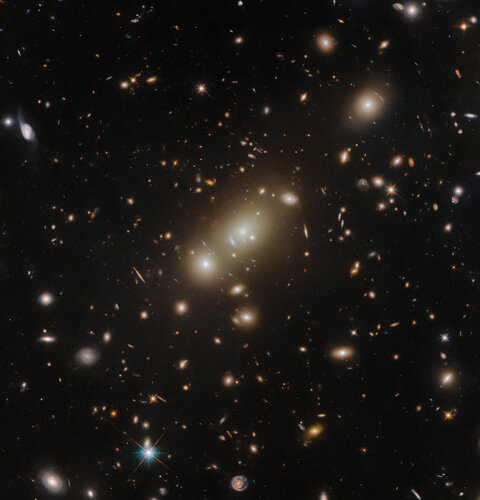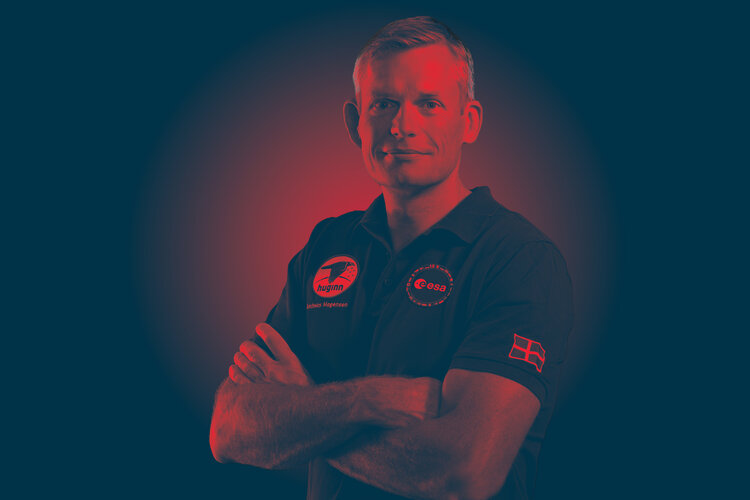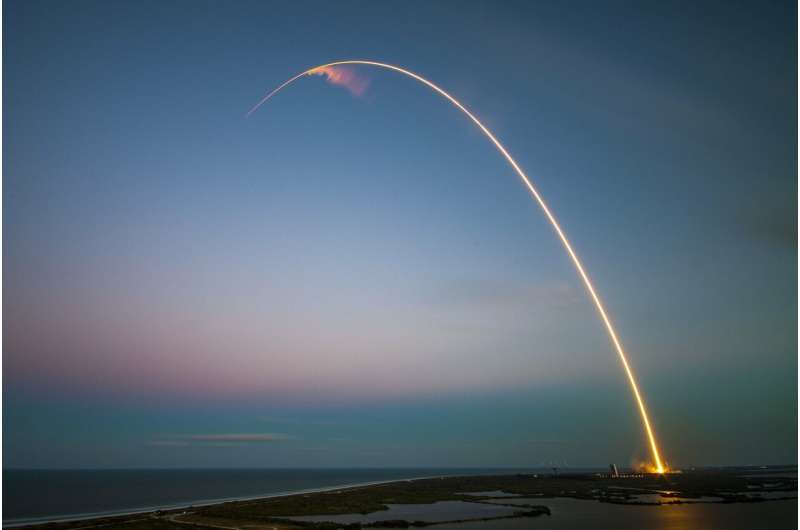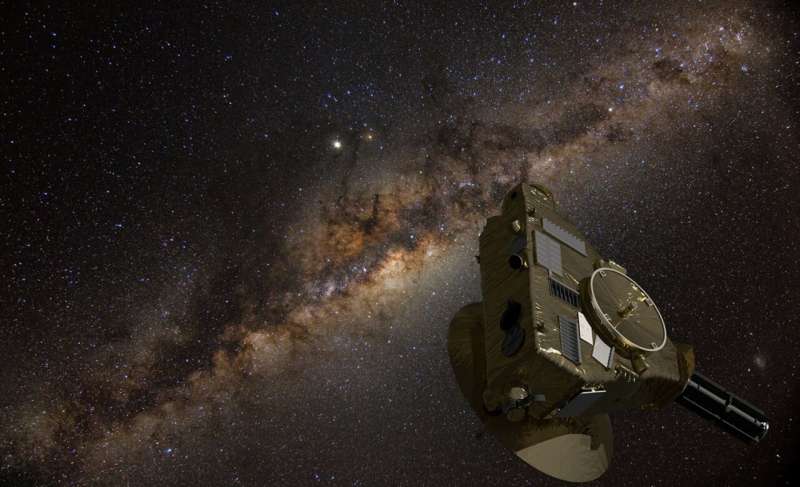
Copernical Team
BAE agrees to buy Ball Aerospace for $5.55 billion
 British military equipment maker BAE Systems announced on Thursday that it had agreed to buy US company Ball Aerospace from the Ball Corporation for about $5.55 billion.
BAE said it hoped to complete the acquisition of the aerospace firm in the first half of 2024, with an anticipated tax credit taking the "underlying economic consideration for the business" to $4.8 billion.
The proposed
British military equipment maker BAE Systems announced on Thursday that it had agreed to buy US company Ball Aerospace from the Ball Corporation for about $5.55 billion.
BAE said it hoped to complete the acquisition of the aerospace firm in the first half of 2024, with an anticipated tax credit taking the "underlying economic consideration for the business" to $4.8 billion.
The proposed Studying rainforests from the skies - radar technology measures biomass
 At present, there are only estimates of how much forest biomass exists worldwide. However, its extent is crucial in order to accurately assess global warming. This information could be used to predict the consequences of climate change and to take appropriate countermeasures. Researchers at the German Aerospace Center (Deutsches Zentrum fur Luft- und Raumfahrt; DLR) are working on technologies t
At present, there are only estimates of how much forest biomass exists worldwide. However, its extent is crucial in order to accurately assess global warming. This information could be used to predict the consequences of climate change and to take appropriate countermeasures. Researchers at the German Aerospace Center (Deutsches Zentrum fur Luft- und Raumfahrt; DLR) are working on technologies t The oldest and fastest evolving moss in the world might not survive climate change
 A 390-million-year-old moss called Takakia lives in some of Earth's most remote places, including the icy cliffs of the Tibetan Plateau. In a decade-long project, a team of scientists climbed some of the tallest peaks in the world to find Takakia, sequence its DNA for the first time, and study how climate change is impacting the moss. Their results, publishing in Cell on August 9, show that Taka
A 390-million-year-old moss called Takakia lives in some of Earth's most remote places, including the icy cliffs of the Tibetan Plateau. In a decade-long project, a team of scientists climbed some of the tallest peaks in the world to find Takakia, sequence its DNA for the first time, and study how climate change is impacting the moss. Their results, publishing in Cell on August 9, show that Taka Embracing the future we need
 When you picture MIT doctoral students taking small PhD courses together, you probably don't imagine them going on class field trips. But it does happen, sometimes, and one of those trips changed Andy Sun's career.
Today, Sun is a faculty member at the MIT Sloan School of Management and a leading global expert on integrating renewable energy into the electric grid. Back in 2007, Sun was an
When you picture MIT doctoral students taking small PhD courses together, you probably don't imagine them going on class field trips. But it does happen, sometimes, and one of those trips changed Andy Sun's career.
Today, Sun is a faculty member at the MIT Sloan School of Management and a leading global expert on integrating renewable energy into the electric grid. Back in 2007, Sun was an AFRL opens extreme computing facility, announces $44M in additional funding
 The Air Force Research Laboratory's, or AFRL, new Extreme Computing Facility at the Information Directorate in Rome, New York, is a vital component to national defense research, and AFRL is using the most cutting-edge Quantum Computing technology available to protect the nation and deliver game-changing technologies to the warfighter.
AFRL's Information Directorate welcomed U.S. Senate Maj
The Air Force Research Laboratory's, or AFRL, new Extreme Computing Facility at the Information Directorate in Rome, New York, is a vital component to national defense research, and AFRL is using the most cutting-edge Quantum Computing technology available to protect the nation and deliver game-changing technologies to the warfighter.
AFRL's Information Directorate welcomed U.S. Senate Maj Using supernovae to study neutrinos' strange properties
 In a new study, researchers have taken an important step toward understanding how exploding stars can help reveal how neutrinos, mysterious subatomic particles, secretly interact with themselves.
One of the less well-understood elementary particles, neutrinos rarely interact with normal matter, and instead travel invisibly through it at almost the speed of light. These ghostly particles ou
In a new study, researchers have taken an important step toward understanding how exploding stars can help reveal how neutrinos, mysterious subatomic particles, secretly interact with themselves.
One of the less well-understood elementary particles, neutrinos rarely interact with normal matter, and instead travel invisibly through it at almost the speed of light. These ghostly particles ou Week in images: 14-18 August 2023

Week in images: 14-18 August 2023
Discover our week through the lens
Huginn - piloting the Dragon

Huginn - piloting the Dragon
Huginn
NASA's tale of two towers: Both Artemis mobile launchers see action

NASA's Artemis program has one tower standing and one just getting started.
Mobile launcher 1 (ML-1), which endured some significant damage after its use on the Artemis I mission last November, has been undergoing repairs and enhancements in preparation for its reuse on next year's planned Artemis II flight, the first with humans on board.
NASA stuck the 380-foot-tall structure atop its slow-moving crawler-transporter 2 on Wednesday at Kennedy Space Center to begin its two-day return to Launch Pad 39-B.
ML-1 is the ground structure that holds NASA's powerful Space Launch System rocket, and for Artemis II, NASA has been working to add essential features for the four humans that will be riding in the Orion capsule atop the rocket. It will make its way into the Vehicle Assembly Building for eventual stacking of all the rocket parts early next year.
For now, though, it has work planned at the launch site where NASA's Exploration Ground Systems team will perform tests and work on upgrades for both the launcher and the launch pad. That includes a launch day demonstration for the Artemis II crew of NASA astronauts Reid Wiseman, Victor Glover, Christina Koch and Canadian astronaut Jeremy Hansen as well as NASA's closeout crew and the rescue team.
New Horizons is so far away, it can measure the true darkness of the universe

Just how dark is the night sky?
If you step outside during a moonless night and look up, it probably doesn't look that dark at all. Streetlights or nearby porch lights fill the air with a background glow, particularly if they happen to be bluish-white LEDs. Light pollution in your neighborhood is likely so bad that you can only see a few bright stars. Even in somewhat rural areas, our skies are so bright that the Milky Way isn't really visible. In North America and Europe, only about a quarter of children have seen the Milky Way.
To get away from all the light pollution you need to travel to a pretty remote corner of the world. One of the most remote is the Andean desert in Chile.
